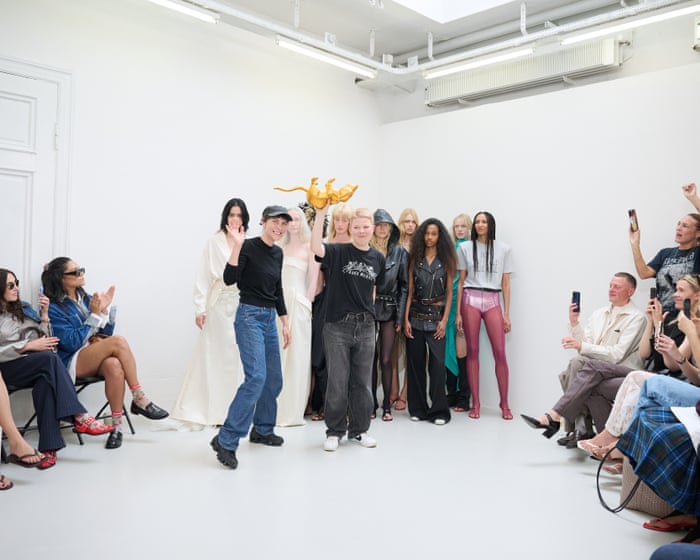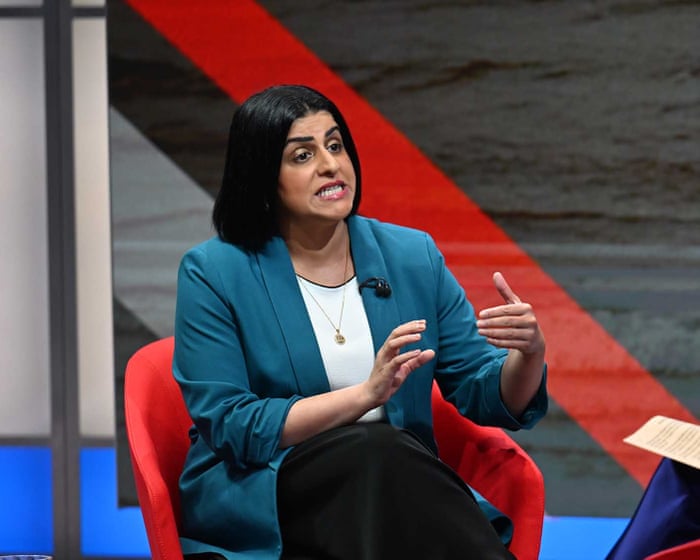Football fans know all about the managerial merry-go-round, but fashion has seen its own version of this over the past year. Since mid-2024, 17 new designers have taken the helm at major houses like Gucci and Dior. Yet in an industry driven by womenswear, only four of these appointments went to women.
The numbers don’t get any better. Among the top 30 luxury brands in the Vogue Business Index, just five creative directors are women. At Kering—home to Balenciaga and Valentino—only one woman leads a brand: Louise Trotter at Bottega Veneta. The same goes for LVMH, the powerhouse behind Loewe and Dior, where Sarah Burton at Givenchy is the sole female creative director.
The imbalance runs deeper. Research from 1Granary in February revealed that while 74% of students in top fashion programs are women, men hold 88% of the industry’s top design roles. No woman has won Designer of the Year at the Fashion Awards since 2012. And it’s not just design—most CEOs and executives in fashion are also men.
But there’s an exception. This week, Copenhagen Fashion Week (CPHFW)—often called the “fifth fashion week”—is showcasing 42 brands, 26 of which are founded and led by women.
Stine Goya, whose namesake label now sells in over 30 countries, calls the male-dominated industry “outdated.” She credits Denmark’s focus on equality—through policies like wage parity and support for working mothers—for fostering change. “Copenhagen has become an ecosystem for independent female-led brands,” she says. “There’s a collaborative spirit here, a willingness to do things differently. Women are building businesses on their own terms.”
Stephanie Gundelach, co-founder of sustainable brand OpéraSport, agrees. “There’s an unspoken bias where women have to work twice as hard to be seen as visionary,” she says. “In Copenhagen, women aren’t waiting for a seat at the table—they’re building their own.”
Fashion’s narrow view of women affects everything, from runway models to clothing design. At CPHFW in 2024, 1.4% of models were plus-size, compared to just 0.8% in New York, London, Milan, and Paris.
Designer Cecilie Bahnsen, known for pairing romantic dresses with sneakers, focuses on comfort. “My pieces don’t overshadow the wearer,” she says. Anne Sofie Madsen, who recently relaunched her brand with co-creative director Caroline Clante, adds: “Women want something different from what male designers suggest. We design with a female gaze—our customers dress to express themselves, not just to be admired.” Her latest collection featured “evening jeans” and playful “rat bags.”
While top fashion jobs often come with burnout, Danish designers prioritize work-life balance. Madsen, who worked at Alexander McQueen and Balmain before launching her label in 2011, embodies this approach.Having worked with designers like Alexander McQueen and John Galliano, she cites fashion’s demanding routine—constant travel, long hours, and the pressure to create over six collections a year—as the reason she paused her brand in 2017. “I realized I was living a life I didn’t want,” she says. “I needed to find another way to work in fashion.”
Now, Madsen and Clante are focused on building their brand around their lives rather than letting it consume them. Madsen continues to teach at the Scandinavian Academy of Fashion Design, while Clante works as a freelance stylist.
Bahnsen, who began showing in Paris in 2022, keeps her atelier in Copenhagen, calling it “her bubble.” She offers flexible hours to her team of 26 women and four men and discourages weekend work. Gundelach and Stelter often finish by 3 PM to spend time with their families, and Bahnsen’s five-year-old son is a frequent presence in her studio. Livia Schück, co-founder of Rave Review—known for boho-inspired dresses made from deadstock—even took her post-show bow holding her five-month-old daughter.
“We don’t have a culture where you have to stay until five or six—that doesn’t work with small kids,” says Stelter. “Our team knows what we expect, but they have flexibility. As long as the work gets done, we’re happy.”
Many Danes reference the “law of Jante,” a Scandinavian social principle emphasizing equality. Gundelach says this fosters collaboration over competition: “There’s a strong community of female creatives supporting each other, which feels rare.”
Goya attributes the success of independent female designers to an “open, ambitious creative scene.” “It’s not about ego—it’s about building a team, a brand, and a community.”
As Isabella Rose Davey of CPHFW notes, these women hope to inspire change beyond Denmark: “This modern, forward-thinking approach is what we need more of globally to ensure women aren’t excluded from leadership roles.”
For the full newsletter—including this week’s trends in The Measure—subscribe to Fashion Statement, delivered every Thursday.




